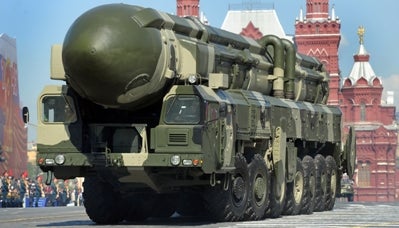Does the United States need fewer nuclear weapons? The White House thinks so.
According to the recent reports, the Administration directed the Pentagon to develop three force levels for the U.S. arsenal of deployed strategic nuclear warheads. The Pentagon is looking at numbers from 1,100 to 300 operationally deployed warheads. The United States currently has about 1,800 warheads.
The Daily Signal depends on the support of readers like you. Donate now
Is the world becoming safer so that the U.S. could unilaterally reduce its nuclear weapons? No. Russia, China, and North Korea are expanding their arsenals. Nuclear-wannabe Iran is getting closer to developing a weapon and frequently threatens Israel, the most important U.S. ally in the Middle East. Yet despite more than 30 countries around the world depending on U.S. nuclear security guarantees, the U.S. is the only country without a substantial nuclear weapons modernization program.
The President is mandating these cuts because he believes in a world without nuclear weapons (also called “nuclear zero”) and that others will follow in reducing their arsenals if the U.S. gives up its nuclear weapons. Unilateral reductions to the proposed levels are only an interim step on the road to the “nuclear zero.” But there is ample historical evidence that the assumption that others will follow is misguided.
Since the end of the Cold War, the U.S. eliminated over 80 percent of its nuclear weapons arsenal. Yet instead of others following the lead, new nuclear weapon players, such as North Korea, emerged. India and Pakistan tested their nuclear weapons in the 1990s. Following the ratification of the New Strategic Arms Control Treaty with the Russian Federation, Moscow started the most extensive nuclear modernization program since the end of the Cold War. This is because countries have their own motivations and security interests that are not derived from U.S. actions.
A review based on an arbitrary set of numbers instead of a sound assessment of the strategic environment can have devastating consequences for the U.S. and its allies. U.S. leadership does not know where a threat will originate and therefore must preserve the widest possible range of options to deter and defend against a wide range of proliferating threats. Today, the list of potential targets is broader and evolves more rapidly than ever before as new players armed with nuclear weapons continue to emerge. This is not the time to further unilaterally reduce U.S. nuclear weapons.






























